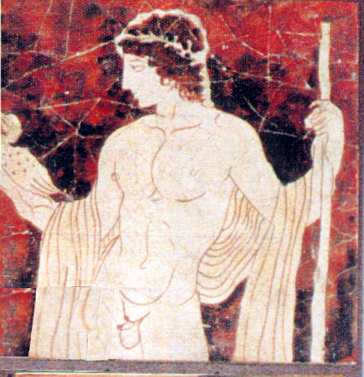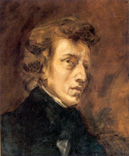 |
 Introduction |
This section is devoted to Chopin and the piano world. First of all, we are offering for free the best critical edition of the works of the great Master, and, furthermore, we submit to your attention:
– reviews of recordings both of Chopin's works and other composers;
– articles, texts and handbooks about the piano-playing, the interpretation, and whatever can be helpful to a pianist.
[As far as the piano is concerned, we would like to point out that these pages are devoted exclusively to those who are not deaf to the quality of the sound produced by the piano, that is, not deaf to the main innovation introduced by the Chopin school, which requires a real piano. A real piano can be distinguished from a fake piano in a very simple and immediate way. Take a grand piano in good condition and invite two, or better, several pianists to play a piece of their choice. Well, if the sound quality produced by the various pianists is the same, that means that the piano is a fake one. In fact, a real piano played by different hands produces a different sound quality, specific to each individual pianist. In the last century, there were several pianos capable of reciprocating in sonority (= sound quality) the differences produced by the different finger pressure exerted by the various players, and we are not alluding to dynamics, that is, to piano and forte, but to sound quality. These pianos were the Bechstein, built before the Second World War (i.e. before Baldwin despoiled the glorious factory of its best workers), the Steinway, the Pleyel, the very rare but beautiful Kaim, to a lesser extent the Bösendorfer, and a few others that have completely disappeared. Today, the only piano that remains sensitive to qualitative pressure, i.e. not only dynamic pressure, is, unfortunately, only one: the Steinway. The reason why, in competitions offering candidates the choice of instrument, fake pianos such as Yamaha and, alas, Fazioli, are increasingly chosen, depends solely on the fact that the candidate, who is unwittingly not deaf, feels that the sound produced by the Steinway does not satisfy him, without realising that the cause is not the instrument, but himself or herself. Those who are deaf will have to turn to the three-legged table to be told the difference between a "beautiful sound" and a "bad sound"; but console yourself, because not even Liszt heard the difference and he himself confesses this when he states that Chopin "particularly liked the Pleyel's pianos because of their silvery, slightly veiled sound and light keyboard", in other words, he had not understood anything. At least, however, Liszt, although he did not possess Chopin's technique, tried to imitate it and to worm out its secret. — June 2021.]
[The readers are invited to point out errors and/or inaccuracies. Thank you!]
 Works of Fryderyk Chopin in a New Critical Edition |
Texts, Articles, Handbooks |
Contact |
![]()
Home | Works of Fryderyk Chopin in a New Critical Edition | Texts, Articles, Handbooks | Contact